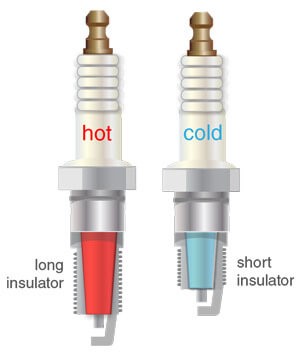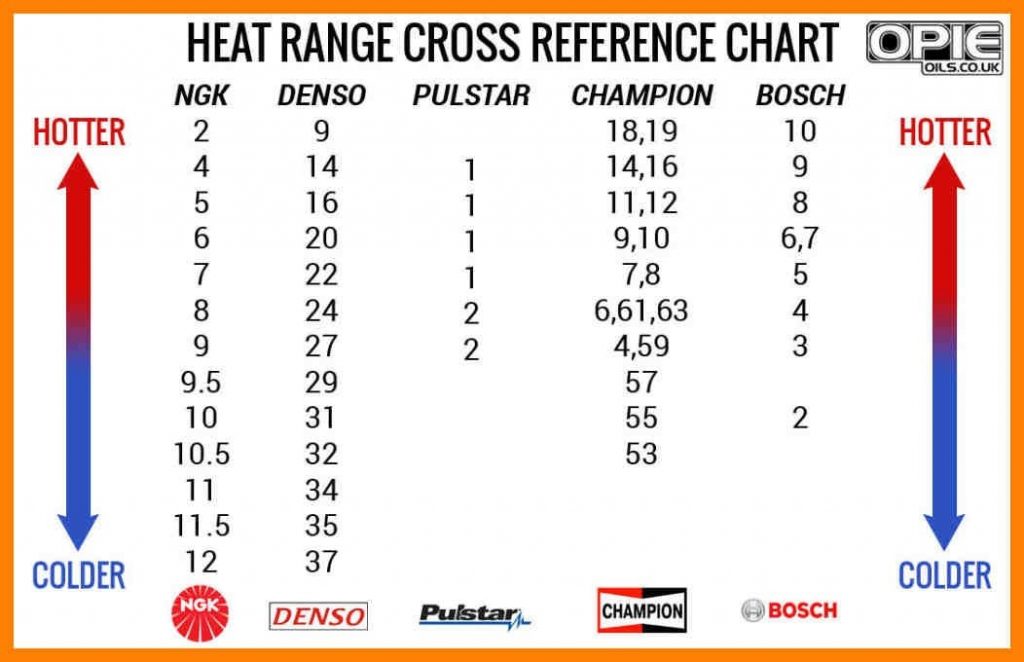
In modern, computer-controlled cars, ignitions are reliable to the point where you rarely consider that they might fail. You have coil-on plugs, also called stick coils, snapped onto the tops of spark plugs, with not even a plug wire between them. The stick coils and plugs are typically hidden inside the engine under a plastic cover that looks like the top of a Shop-Vac. There’s no distributor, because the functions of advancing the spark with increasing engine rpm and distributing it to each cylinder are performed electronically, with everything controlled by the car’s electronic control unit, or ECU.
This is not the case in classic, antique and brass era cars, unless they have been changed-over to electronic ignitions. If, however, you do have the original ignition, a lot can be learned about the running of your engine.
A hotter plug does what is says, it runs hotter. This will not give any more power and neither will a too cold plug. Because the spark plug resides in the combustion chamber, it’s influenced by what happens there. It serves a dual purpose; not only is it responsible for initiating the combustion event, but it gladly tells the tale of how the chemical to mechanical energy exchange process took place. If all is well, the plug is clean, but if something is not correct, it will leave its mark for the trained eye to diagnose. In many ways, the spark plug could be looked at as one of the first forensic investigators. You can work out whether you need a hotter or colder plug by looking at the current ones. If the current plug is too hot then the tip may be melted or deformed. If the plug is too cold then you may have excessive build up (which can also be caused by burning oil or a rich air-fuel mixture).

If you can be “tuned in” to your plugs, you will be able to read problems in your old car before it leaves you by the road. Cleaning with steel wool is better than nothing. Using a spark plug sand blaster gives the best cleaning although you can damage the porcelain insulation and cause the spark to “go to ground” somewhere besides the end electrode, it’s proper destination.
Encrusted black carbon is a sign of problems. The causes of this condition may be a cold type of plug, which is proper if you are using the car for long road trips. If all you are doing is driving the car off and on a trailer or around the block and back, change to a hot plug.
Excessive oil reaching the combustion chamber, especially at slow or idling speeds, is also a frequent contributor. A hot plug temporarily may solve the problem, but excessive oil is a sign of other problems, as in bad rings or pistons.
If some of the plugs are clean and others have dry sooty lamp black deposits, the sooty plugs are getting too much gasoline, and can be corrected with carburetor adjustments. If a leaner mix is used, and the engine runs irregularly or misfires, go back to original setting and consider a hotter plug.
Incorrect gaps also contribute to fouling, and is attributed to too narrow a gap. Check the gap and published specs on your car and re-gap all plugs.
The spark plug tip temperature must remain between 930°F to 1560°F , regardless of the type of engine the plug is fitted in.
If the tip temperature is lower than 930°F, the insulator area surrounding the center electrode will not be hot enough to burn off carbon and combustion chamber deposits. These accumulated deposits can result in spark plug fouling, leading to misfire.
If the tip temperature is higher than 1560°F, the spark plug will overheat which may cause the ceramic around the center electrode to blister and the electrodes to melt. This may lead to pre-ignition/detonation and expensive engine damage.
In identical spark plug types, the difference from one heat range to the next is the ability to remove or add approximately 150°F to 200°F in the combustion chamber.


Leave a Reply